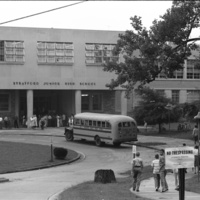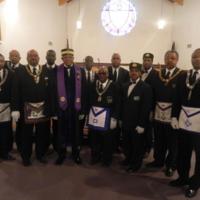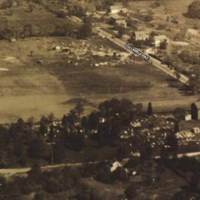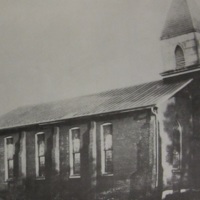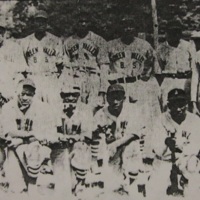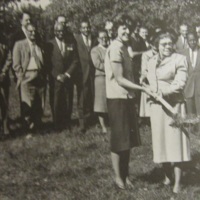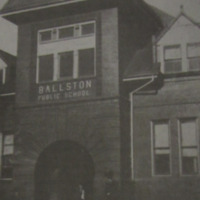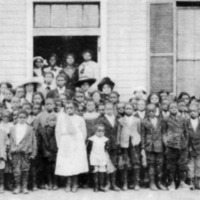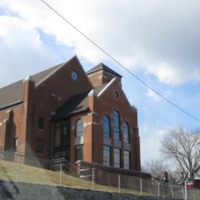Browse Items (16 items total)
In June of 1918 the first rural branch of the NAACP formed in Falls Church with the express goals of working against discrimination and segregation. Support for the NAACP and its causes continued to expand until Arlington County could support a separate dedicated branch in 1940 with 71 members. The branch would continue to grow and soon became one of the largest branches in the state. The organization worked to combat de jure and de facto discrimination, and was particularly active in battling Arlington's school segregation in the courts throughout the 1940s and 1950s. Thanks to this dedication on February 2, 1959 Arlington's Stratford Junior High School, pictured here, became the first school in the state of Virginia to integrate.
Collection: Community Institutions
Arlington's African American Masonic Lodge No. 58 was founded in the Green Valley community in 1888. The institution provided Arlington's growing black community with social, fraternal, and political support. Early members included community leaders Henry Louis Holmes and Edmund C. Fleet. The image above shows current members in the Masonic Lodge at their 2013 sunrise service.
Collection: Community Institutions
This African American fraternal organization was founded in Arlington's Freedman'c Village community in 1870. It served many needs of the newly established and growing black community – hosting social functions, serving as a meeting ground for political functions, serving as a credit union, helping to establish internal community leadership, and supporting black churches and schools. In 1884 the Odd Fellows purchased land in the African American, middle class, Johnson's Hill community to construct the Odd Fellows Steven's Lodge No. 1453. The institutions remained a central part of Arlington's civic-minded African American community through the twentieth century. The Hall was destroyed by fire in 1965.
Collection: Community Institutions
Mt. Olive was founded in 1873 when the Old Bell Baptist Church in Freedman's Village split into two churches. The new congregation built the brick and marble church pictured here in the geographical center of the growing working class black neighborhood of Queen City in eastern Arlington. In July of 1942, just three years after residents constructed a new and expensive church building, Mt. Olive was demolished along with the rest of the Queen City community to make way for the Pentagon's road networks. The church and its congregation relocated yet again, this time to Johnson's Hill.
Collection: Community Institutions
The League was a loosely organized social and political organization comprised of about twenty of the county's wealthiest and most prominent residents - including William Ball, Crandal Mackey, and Frank Lyon. Many of their aims centered on bringing more municipal improvements to the county, as a part of the broader Southern Progressive Movement. The group famously armed themselves and attacked saloons in Rosslyn on May 30, 1904 in an effort to rid the county of institutions and individuals they deemed undesirable. Here, Mackey stands on the porch of a saloon.
Collection: Community Institutions
At the turn of the last century baseball was such a popular sport in Arlington that the county supported as many as five semi-professional teams. Like most elements of life at the time, sports and recreation were segregated.
Beginning in the 1910s, Arlington's black community formed the Black Socks Baseball team, pictured here. From their home base of Peyton Field in the Nauck community (formerly Green Valley). the Black Socks toured the east coast playing other black teams.
Beginning in the 1910s, Arlington's black community formed the Black Socks Baseball team, pictured here. From their home base of Peyton Field in the Nauck community (formerly Green Valley). the Black Socks toured the east coast playing other black teams.
Collection: Community Institutions
In 1946 Arlington's African American community leaders began fundraising for the Veteran's Memorial Branch YMCA. Recreational facilities, including those sponsored by the existing YMCA, were segregated along racial lines at the time. Spearheaded by life-long activist and community resident Edmund Fleet, the Veteran's Memorial Branch YMCA opened in 1949.
It sponsored social and recreational activities for Arlington's black youth. In the 1960s, a pool was added to the facility so Arlington's black youth would finally have a safe place to swim in the county. This photograph shows the groundbreaking for the swimming pool.
It sponsored social and recreational activities for Arlington's black youth. In the 1960s, a pool was added to the facility so Arlington's black youth would finally have a safe place to swim in the county. This photograph shows the groundbreaking for the swimming pool.
Collection: Community Institutions
Ballston was one of the first communities in Arlington to have a school. Originally called Walker School, the school was opened at the Good Templar's Hall in Balls' Cross-Roads the first year the County began sponsoring public school in 1871. After using this space for six years and a small wood-frame school house from 1878 to 1893 the new Ballston School house, pictured here, was opened in 1893. The red-brick, two story Ballston School had the same design as the Hume School which still stands.
This image from 1907 shows Carl Porter and his mother standing in front of Ballston School.
This image from 1907 shows Carl Porter and his mother standing in front of Ballston School.
Collection: Community Institutions
Kemper School was the African American school for the the Green Valley community, Kemper opened in 1875 within Green Valley's AME Zion Church. Upon it's opening, Kemper was one of three schools for African American children, joining schools in the black communities of Hall's Hill and Freedman's Village.
In 1885 the school moved to a one-story, wood-frame school house on 3/4 of an acre of land. The school was named for Virginia Governor James L. Kemper who supported education for African Americans. By 1893 the school had outgrown its original structure and a new brick, two-story school house was created by Noble Thomas, the first black contractor in the county. In 1944 the school expanded further with the addition of the Kemper Annex, which was renamed Drew in 1955 in honor of leading African American blood plasma researcher and Arlington resident Dr. Charles Drew.
In 1964 Kemper ceased to function as a school, replaced by the larger Drew School. The building was demolished in the 1980s to make room for partially subsidized town-homes.
In 1885 the school moved to a one-story, wood-frame school house on 3/4 of an acre of land. The school was named for Virginia Governor James L. Kemper who supported education for African Americans. By 1893 the school had outgrown its original structure and a new brick, two-story school house was created by Noble Thomas, the first black contractor in the county. In 1944 the school expanded further with the addition of the Kemper Annex, which was renamed Drew in 1955 in honor of leading African American blood plasma researcher and Arlington resident Dr. Charles Drew.
In 1964 Kemper ceased to function as a school, replaced by the larger Drew School. The building was demolished in the 1980s to make room for partially subsidized town-homes.
Collection: Community Institutions
Mount Zion Baptist Church is a brick structure which features a gabled roof and right form tower.
The church congregation was originally founded within the Old Bell Church in Freedman's Village in 1866. In the late-1860s the Old Bell Church was demolished and the church split into two congregations - Mt. Olive and Mt. Zion Baptist churches. Both formed in the community of Queen City. In 1942 the federal government condemned the church and surrounding community to make way for the road networks of the Pentagon. The congregation moved to Green Valley where they opened the current church in July on 1945.
The church congregation was originally founded within the Old Bell Church in Freedman's Village in 1866. In the late-1860s the Old Bell Church was demolished and the church split into two congregations - Mt. Olive and Mt. Zion Baptist churches. Both formed in the community of Queen City. In 1942 the federal government condemned the church and surrounding community to make way for the road networks of the Pentagon. The congregation moved to Green Valley where they opened the current church in July on 1945.
Collection: Community Institutions
